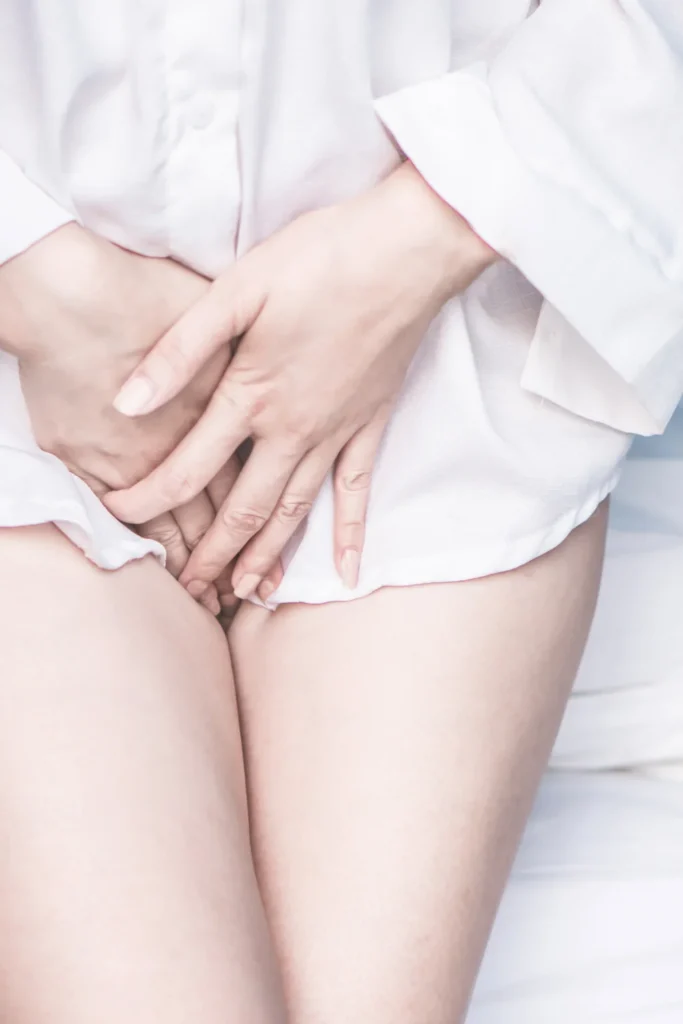Your body tells a story. Sometimes, that story includes subtle variations that are more normal than you might think.
What is labial asymmetry? It reveals a complex interplay of genetic, hormonal, and developmental factors.
Every body is a unique landscape, shaped by genetics, hormones, and life experiences.
While labial asymmetry is completely natural and experienced by many individuals, it’s equally valid to feel self-conscious or desire aesthetic adjustment.
Your feelings are personal and important. Whether you choose to embrace your natural variation or explore surgical options, the most crucial aspect is feeling comfortable and confident in your own body.
If you want to get started exploring your options, contact us today so we can answer any questions you have about labiaplasty.
Normal Variation vs. Asymmetry

Understanding labial asymmetry requires a nuanced approach to intimate anatomical variations.
Medical professionals consistently observe that slight variations in labial structure are common and often normal. Most people have some degree of asymmetry, which falls well within the range of normal anatomical diversity.
The human body rarely creates exact mirror images. Just as faces aren’t perfectly symmetrical, intimate anatomy follows similar principles of natural variation.
Developmental Causes of Labial Asymmetry
Genetic Factors
Genetics play a profound role in determining labial structure and potential asymmetry. Inherited genetic traits can influence tissue development, collagen production, and overall morphological characteristics. Some individuals may inherit specific genetic markers that predispose them to more pronounced tissue variations.
Multiple genes can contribute to soft tissue development, creating a complex interplay of genetic instructions. These genetic blueprints determine everything from tissue elasticity to potential structural variations, making each person’s anatomical configuration wonderfully unique.
Puberty Changes
Puberty also represents a critical period of significant bodily transformation. Hormonal surges during adolescence trigger dramatic changes in reproductive tissues, potentially contributing to asymmetrical development. Testosterone, estrogen, and growth hormones orchestrate a complex dance of tissue growth and differentiation.
Teenagers experiencing these changes might notice subtle shifts in their intimate anatomy. These variations are typically part of normal developmental processes and rarely indicate underlying medical concerns.
Related: Labiaplasty Surgery: Side Effects, Recovery & More
Congenital Conditions
Some individuals are born with specific conditions that might influence labial structure. Congenital disorders affecting connective tissue, hormonal receptors, or developmental pathways can create more pronounced asymmetrical presentations.
However, these conditions represent a small percentage of overall cases and often require specialized medical evaluation.
Hormonal Influences

Pregnancy and Childbirth
Pregnancy introduces dramatic physiological changes that can significantly impact intimate anatomy. Hormonal fluctuations, increased blood flow, and mechanical stretching during childbirth can alter tissue structure and symmetry. Estrogen and relaxin hormones prepare the body for delivery, potentially causing temporary or permanent tissue modifications.
Post-partum women might experience lasting changes in labial appearance and texture. These transformations are natural consequences of the physical journey of bringing life into the world.
Age-Related Changes
Aging introduces predictable yet individualized anatomical shifts. Decreased collagen production, reduced tissue elasticity, and hormonal transitions contribute to gradual structural modifications.
Menopause, in particular, can trigger significant changes in intimate tissue composition and appearance.
Reduced estrogen levels during later life stages can lead to thinner, less elastic tissue, potentially accentuating asymmetrical characteristics. These changes are usually normal biological processes, not indicators of medical dysfunction.
Trauma and Injury
Physical Impact
Physical trauma can create lasting changes in labial tissue structure. Injuries from accidents, sports, or other high-impact activities might cause scarring, uneven healing, or localized tissue damage.
During the birthing process through the vaginal route, there can be labial stretching and tearing that can lead to asymmetry. The body’s healing mechanisms may not always produce perfectly symmetrical results.
Chronic Irritation
Persistent irritation from clothing, physical activities, or medical conditions can gradually alter tissue characteristics. Chronic inflammation might lead to localized tissue changes, potentially contributing to asymmetrical presentations.
Psychological Impact of Labial Asymmetry

Beyond physical considerations, labial asymmetry can significantly affect psychological well-being. Many individuals experience profound emotional responses ranging from mild self-consciousness to deep-seated anxiety about their intimate anatomy. These feelings are valid and complex, often rooted in societal beauty standards and personal body image perceptions.
Different cultures also interpret bodily variations through unique lenses. While Western medical perspectives increasingly normalize anatomical diversity, some cultural contexts still create unrealistic aesthetic expectations.
Advances in reconstructive medicine continue to revolutionize treatment approaches.
Cutting-edge techniques like precision 3D imaging, minimally invasive surgical methods, and personalized tissue engineering are expanding possibilities for patients seeking aesthetic or functional improvements.
Learn more about why patients choose Dr. Adrian Lo — and give us a call to learn more about the process!
Treatment Options
Comprehensive approaches like vaginal rejuvenation can address both aesthetic and functional concerns. Explore our labiaplasty before-and-after photos so you can understand what your journey might look like!
Non-Surgical Approaches
Some cases of labial asymmetry might not require intervention especially if very minimal. Conservative management strategies like targeted physical therapy, specialized skincare, and holistic wellness approaches can provide temporary comfort or minimal aesthetic improvements.
However, these methods typically offer limited results and do not address the underlying structural variations.
For those seeking a definitive, precise solution, labiaplasty remains the most effective approach to achieving symmetry and addressing individual aesthetic concerns.
While non-surgical methods may provide temporary relief or marginal improvements, only a skilled plastic surgical intervention can comprehensively reshape and balance labial contours, delivering the transformative results many patients desire.
Related: 5 Life-Changing Reasons to Consider Labiaplasty
Surgical Solutions
For those considering labiaplasty surgery, understanding the underlying causes of anatomical variations is crucial.
Some patients might explore labia minora reduction to address functional or aesthetic concerns. For individuals experiencing significant functional or aesthetic concerns, surgical options exist.
Labiaplasty and reconstructive procedures can address more pronounced asymmetries. Labial reconstruction offers advanced solutions for those experiencing significant structural variations.
These interventions require thorough consultation with an award-winning plastic surgeon (like Dr. Adrian Lo!) who understands the nuanced nature of intimate anatomy.
Recovery Process
Labiaplasty recovery requires patience, careful follow-up, and adherence to professional medical guidance. Surgical interventions demand comprehensive, patient-centered recovery protocols.
Healing involves both physical restoration and emotional support. If you’re exploring Dr. Adrian Lo for your labiaplasty, expect an individualized care plan that prioritizes comfort, functionality, and psychological well-being.
Trust Your Labial Asymmetry Surgery to Philadelphia’s Leading Plastic Surgeon
Our Philadelphia plastic surgery practice prioritizes patient dignity, medical excellence, and personalized treatment approaches.
Schedule a consultation to explore your options with understanding and professionalism!
